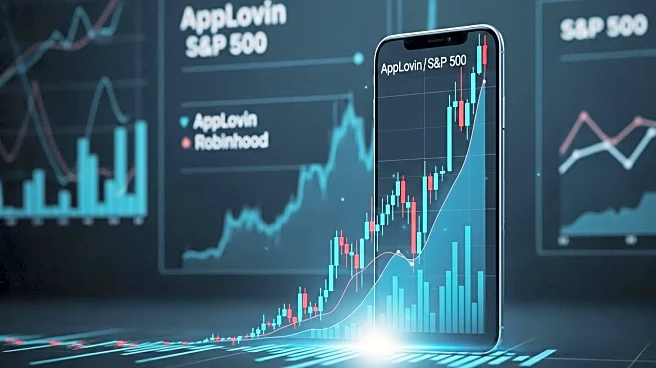What's Happening?
Robinhood Markets' inclusion in the S&P 500 on September 22, 2025, marked a significant milestone for the fintech sector. Replacing Caesars Entertainment, Robinhood's stock price surged by 7% in after-hours trading following the announcement. This inclusion is expected to increase liquidity and institutional demand for Robinhood shares, as index-tracking funds are required to rebalance their portfolios. The inclusion also serves as a validation of Robinhood's strategic relevance and financial stability, despite previous concerns over its financial health.
Why It's Important?
Robinhood's addition to the S&P 500 highlights the growing influence of fintech companies in traditional financial markets. The inclusion is likely to attract more institutional investors, increasing liquidity and visibility for Robinhood. This move also underscores the importance of financial stability and growth potential in the selection criteria for index inclusion. For investors, Robinhood's inclusion offers opportunities for exposure to the fintech sector, but also requires careful consideration of the company's financial resilience and strategic execution.
What's Next?
As Robinhood navigates its new status as an S&P 500 constituent, it faces the challenge of maintaining earnings consistency and cash flow generation. The company must also address regulatory scrutiny and margin pressures in a highly competitive market. Investors will need to balance the momentum-driven opportunities with a rigorous assessment of Robinhood's fundamentals and strategic positioning.
Beyond the Headlines
The inclusion of Robinhood in the S&P 500 reflects a broader trend of fintech companies gaining prominence in traditional financial indices. This shift may encourage other fintech firms to pursue strategies that align with index inclusion criteria, potentially reshaping the financial services landscape.












